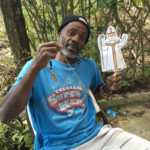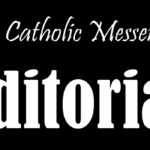A new school year has begun and with it a growing emphasis on STEM — the acronym for the studies of Science, Technology, Engineering and Math. STEM has become the buzz word of this decade. Students who want to flourish in a diverse, technology-driven world know that focusing on STEM is essential. For those of us committed to passing on the Catholic faith, we should consider a complementary focus on teaching about the compatibility between faith and science. Our mission is helping students and adults to understand life as God’s gift and calling.
Recent studies show that young adult Catholics are leaving the church at an alarming rate and, so far, they’re not coming back. Their lived experience in a culture that rewards sophistication and open-mindedness has created a mindset that faith is for the naïve, the non-thinkers. Former young adult Catholics — and even some young adults who remain Catholic — view the principles of scientific proof and logic as the ultimate authority on truth and reality. They see faith as either violating or falling short of the standards of scientific knowledge, according to “Former Young Catholics, Finding from a National Study of Emerging American Adults.”
Philosophy professor Christopher Kaczor identifies several core issues that drive the myth that faith and science are incompatible. Among them: people’s misunderstanding of the biblical stories of Creation and of miracles, the church’s condemnation of Galileo, and the church’s opposition to stem cell research. Kaczor effectively explains each issue and corrects the misunderstandings in his book “The Seven Big Myths about the Catholic Church: Distinguishing Fact from Fiction About Catholicism.” Do a “Google” search on line for the article.
One helpful step in demonstrating the compatibility between faith and science would be to teach students about the many Catholic scientists who have and do contribute significantly to our understanding of the world and the universe. Among them: Roger Bacon, a 13th century Franciscan friar credited with originating the modern scientific method; Louis Pasteur, a 19th century chemist, scientist and inventor whose studies impacted the way we understand germs; Gregor Mendel, a 19th century monk and father of genetics; and Brother Guy Consolmagno, a Vatican astronomer who won the 2014 Carl Sagan Medal from the Division for Planetary Science of the American Astronomy Society. The society noted that the Jesuit astronomer “occupies a unique position within our profession as a credible spokesperson for scientific honesty within the context of religious belief.”
Granted, some Catholic scientists through the centuries endured condemnation from church leaders at the time (Galileo, for example, although his is a very complicated story that includes powerful personalities and politics). Such conflict underscores the fact that we are human and not God. Opposing views also point to the tension that exists between faith and science because neither is static. Science is an unfolding discipline. Every question raises more questions in the quest for truth. Faith, too, constantly raises questions in the quest for truth — a quest to understand why and what we believe in a changing world. Science and religion ask different questions and have different methodologies, but their ultimate goal is the quest for truth. We believe that the author of truth is God, that truth is one.
We should do more in our religious education and Catholic school classrooms and adult faith formation classes in teaching about the quest for truth through science and faith. We can’t shy away from teaching about modern discoveries and theories of science because they challenge our thinking.
Last winter, the head of the Vatican Observatory and Iran’s Embassy to the Holy See sponsored a workshop on the role of astronomy in Christianity and Islam. The workshop explored the ways in which Christianity and Islam studied the heavens in the fields of science and faith. What a beautiful example of embracing the compatibility of faith and science!
Let’s demonstrate for students that our faith allows us to be savvy and realistic in the world we live in. We can serve as role models in practicing the faith — being consistent and committed to participating regularly in a faith community that celebrates the Eucharist together in the Mass. Our students’ exploration of Science, Technology, Engineering and Math can be enhanced and enriched by our deepening relationship with the God who makes it all possible.
Barb Arland-Fye











